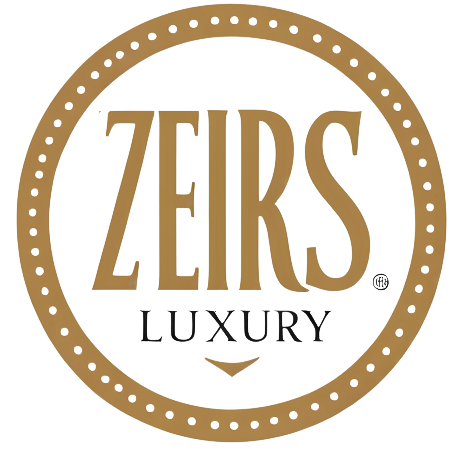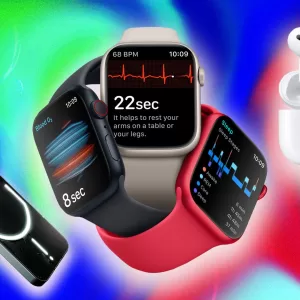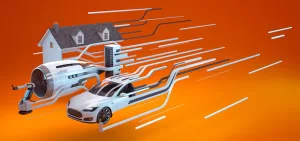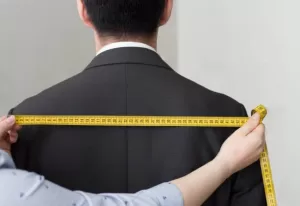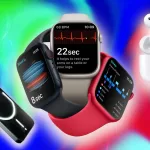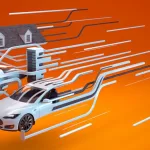
Introduction to Personal Drones in Luxury Lifestyle
Overview of the Personal Drone Market and Luxury Implications
– **Expanding Market**: The drone market, once dominated by military and hobbyist applications, is now seeing significant growth in the luxury segment.
– **Consumer Adoption**: High-net-worth individuals are embracing drones for their unique ability to enrich personal experiences.
– **Advanced Features**: Today’s personal drones boast high-resolution cameras, extended flight times, and sophisticated design aesthetics, appealing to the luxury market.
– **Use in Private Events**: Upscale events frequently feature drone photography and videography, adding an innovative touch to capturing memories.
– **Travel and Exploration**: Luxury travel experiences are being enhanced with drones, allowing adventurers to capture and share breathtaking aerial views of their journeys.
– **Price Point**: While more expensive than standard consumer models, luxury drones come with advanced capabilities and exclusive design elements justifying their premium pricing.
By integrating cutting-edge technology with personalized experiences, drones are carving out a niche in the luxury lifestyle market. They are not just gadgets but have become status symbols, akin to high-end watches or designer handbags. As the technology continues to evolve, so do the opportunities to create unprecedented experiences that resonate with the discerning tastes of luxury consumers.
The Role of Drones in Enhancing High-End Experiences
– **Event Filmmaking**: Drones are revolutionizing the world of event filmmaking, offering new perspectives in the creation of wedding videos, private parties, and exclusive gatherings.
– **Real Estate Showcasing**: In luxury real estate, drones provide potential buyers with a comprehensive view of properties, including sweeping aerial shots that highlight the extent and exclusivity of estates.
– **Yachting Adventures**: Owners of high-end yachts use drones to film their oceanic adventures, often sharing the footage on social media as a testament to their opulent lifestyle.
– **Aerial Surveillance**: Personal drones also double as security tools, offering aerial surveillance capabilities to monitor vast properties or estates.
– **Sporting Experiences**: For sports enthusiasts, drones capture dynamic footage of activities like skiing, mountain biking, and surfing from angles previously impossible to achieve.
– **Privacy Concerns**: High-profile individuals use drones with caution, balancing the desire for spectacular aerial imagery with the need for privacy and security.
Luxury consumers continually seek ways to differentiate their experiences and own items that are not only exclusive but also technologically advanced. Personal drones in the luxury lifestyle segment are fulfilling this demand by elevating personal experiences to new heights, quite literally. As the trend grows, luxury brands may begin to partner with drone manufacturers to create co-branded editions, further solidifying the presence of drones in the realm of luxury.
Market Dynamics of Personal Drones
When considering the broader drone market, personal drones comprise a significant segment that can’t be overlooked. Stepping into my role as an industry analyst, I’ve seen firsthand the sales numbers that demonstrate the growing consumer interest in these sophisticated flying machines. Here are some key insights into the personal drone segment:
Personal Drone Sales: Analyzing the Numbers
– **Market Growth**: Initially seen as gadgets for tech enthusiasts, personal drones have found a mainstream market. Sales have soared, with more people viewing drones as a tool for recreational photography, racing, and even aerial yoga sessions.
– **Diverse Price Points**: The range of drones available to consumers varies widely, with prices from under a hundred dollars to several thousand. This has made them accessible to a broad audience, though the higher end of the market still drives considerable revenue.
– **Evolving Features**: More affordable drones are continuously packed with features once reserved for premium models. Camera quality, battery life, and flight control technology have all improved, making personal drones not only more user-friendly but also more capable.
The Surge of High-End Drones in Luxurious Settings
– **Luxury Real Estate**: High-end drones are being employed to capture stunning aerial footage of luxury properties, giving potential buyers a bird’s-eye view of their prospective homes.
– **Exclusive Events**: From outdoor weddings to private parties at remote destinations, drones are being used to document special moments from perspectives once only achievable through professional cinematography.
– **Yacht Surveillance**: The elite are using drones to provide a layer of security and surveillance around their private yachts. The combination of real-time video feeds and accessibility provides an unmatched level of personal safety and privacy.
The commercial utility of drones is undeniable, from surveying farmland to expediting insurance claims. However, the personal drone market continues to evolve, shaping everyday experiences and luxury services. It’s clear that the innovation in this space is not solely driving business efficiencies but also adding a new dynamic to personal enjoyment and opulence.
As we’ve seen with the growth projections and the increasing integration of drones into both commercial and personal arenas, it’s evident that this sector will continue to expand. Personal drones, once the domain of hobbyists and enthusiasts, are now entering the mainstream, reflecting broader technological trends and consumer behaviors. The adaptability and wide-ranging applications of drones underscore their potential and hint at an even more drone-integrated future.
Technological Advancements in Drone Capabilities
As someone deeply invested in the drone market’s evolution, I’ve observed advancements in technology that are transforming the capabilities of personal drones. These developments are not just enhancing user experience but are also setting new standards for what drones can achieve.
Innovations Defining the Next Generation of Personal Drones
– **AI and Machine Learning**: The application of artificial intelligence (AI) and machine learning is giving drones the ability to navigate more complex environments and make autonomous decisions. This leads to safer and more efficient flights.
– **Battery and Energy Improvements**: Progress in battery technology is a game-changer. Drones can now fly longer, reduce downtime, and provide more persistent services, thanks to advancements in energy density and charging speeds.
– **Sensor Integration**: The integration of advanced sensors, such as LiDAR, thermal, and multispectral cameras, is allowing personal drones to perform tasks that were once the purview of specialized commercial equipment. This has huge implications for hobbyists interested in areas like environmental monitoring or advanced photography.
– **Enhanced Connectivity**: Connectivity improvements through 5G technology enable drones to transmit high-resolution media in real-time, deepening the immersive experience for those piloting drones recreationally or sharing their aerial adventures with others.
– **Compact and Foldable Designs**: Innovation in design has resulted in drones that are more portable than ever. Their compact and foldable nature allows enthusiasts to easily take their drones on trips, ensuring that adventure documentation is no longer cumbersome.
How Tech Advances Elevate the Luxe Factor of Personal Drones
– **Improved Aesthetics and Customization**: Today’s personal drones are not just functional; they’re stylish. With sleek designs and customizable options, drones can reflect the persona of the high-end user.
– **Quiet Flight Mechanics**: Noise reduction technology in drones ensures that their operation is less intrusive, an especially valued feature for use within the luxury market where discretion is often a priority.
– **Precision Control for Cinematography**: The precision control offered by the latest drones allows for incredibly smooth and accurate movement, ideal for capturing cinematic-quality footage. This bodes well for high-end real estate showcases or exclusive event documentation.
– **Advanced Security Features**: For individuals seeking privacy, drones now offer sophisticated security features that include facial recognition and secure data transmission, which provides peace of mind for those using drones to survey their properties or events.
– **Smart Home Integration**: With smart home ecosystems becoming prevalent, the ability to integrate drones seamlessly into these systems adds another layer of convenience and control, perfect for the tech-savvy luxury consumer.
The advancements in drone technology are profoundly influencing the personal drone segment, redefining what’s possible. Groundbreaking improvements in AI, battery life, connectivity, and more, are pushing the boundaries and enhancing how individuals interact with drones, both for leisure and luxury experiences. The market continues to forge ahead, and in doing so, it is clear that the future of personal drones is brighter and more sophisticated than ever.
The Emergence of Personal Flying Devices
The landscape of personal transportation is on the cusp of a revolution, with new advancements hinting at a future where personal flying devices may become a common sight. In my exploration of this industry, I’ve observed an explosive interest in personal aircraft, particularly those powered by electric motors. These developments are indicative of a future that embraces three-dimensional space as a new frontier for individual mobility.
Exploring Personal Aircraft and Electric Motors
– **Innovations in Technology**: The progress in battery technology and electric motors has made the concept of personal flying devices more feasible. Electric Vertical Take-off and Landing (eVTOL) aircraft are at the forefront of this revolution, combining the potential for zero emissions travel with the convenience of vertical take-offs and landings.
– **Increasing Investment**: There has been a surge in research and investment from startups and established aerospace companies, all vying to be the first to commercialize personal flying devices. It’s a race that blends bold engineering with fine-tuned software, aiming to redefine how we think about personal mobility.
– **Safety and Reliability**: A major focus point is ensuring that these new types of flying devices meet rigorous safety and reliability standards. Autonomous flight systems and redundancies are being developed to create aircraft that can be operated by people with minimal training, making personal flying devices more accessible to a wider audience.
Challenges and Opportunities in Personal Aerial Mobility
– **Regulatory Landscape**: Integrating personal flying devices into existing airspace poses a significant challenge. Regulatory bodies are working to establish rules that ensure safety while fostering innovation. Collaborative efforts are required to create a seamless transition from our current transportation systems to one that includes personal aerial mobility.
– **Urban Infrastructure**: Cities will need to adapt to accommodate personal flying devices. This includes the development of vertiports and new traffic management systems to handle the influx of aerial vehicles. Urban planning must evolve, prioritizing the infrastructure needed to make personal flying devices a practical option for daily commute.
– **Public Perception**: Acceptance by the general public is also crucial. Concerns over noise, privacy, and safety must be addressed to gain public trust. It’s essential to demonstrate the benefits these devices can offer in terms of reducing traffic congestion, pollution, and promoting a more efficient way of traveling.
As a professional closely monitoring this sector, I am convinced that the emergence of personal flying devices is more than just a fantasy. The innovations I’ve seen are rapidly transforming into viable solutions that could soon impact our everyday lives. While there are challenges to address, the opportunities personal aerial mobility presents are vast and could very well shape the future of transportation.
With continuous advancements in technology, expanded investment, and a growing focus on sustainability, we are inching closer to a world where personal flight is not just a privilege for the few but an option for many. The journey to that reality is an exciting one, and I look forward to witnessing how personal flying devices will navigate the path from novel prototypes to an integrated component of our daily transport ecosystem.
Regulatory Landscape and Future Flyways
As we navigate the waters of innovation in personal flying devices, regulatory challenges present significant hurdles yet to be crossed. My research and insights into the developing legal framework for these devices point to a future landscape that requires careful navigation.
Current Regulatory Challenges for Personal Drones
– **Navigating Airspace Regulations**: One of the main concerns revolves around how personal drones will fit into the already complex airspace regulations. Current aviation laws were not designed with personal drones in mind, hence, there’s a push to update these laws to safely incorporate new aerial technology.
– **Certification and Licensing**: Another challenge lies in establishing certification processes for these devices and licensing for operators. The criteria for these have to be developed, ensuring that they are stringent enough to maintain high safety standards.
– **Privacy and Security**: The widespread use of drones brings up issues related to privacy and security. Regulatory bodies must tackle these concerns head-on to protect citizens while not stifling the potential of personal flying devices.
– **Beyond Visual Line-of-Sight (BVLOS) Operations**: For personal drones to truly revolutionize transport, they must be capable of flying beyond the visual line of sight. This presents complex challenges in terms of managing traffic and ensuring safe operations without direct visual monitoring by the pilot.
Anticipated Changes in Drone Regulation for Luxury Lifestyles
– **Tailored Airspace Access**: I envision a future where regulatory frameworks may offer tailored airspace access for personal drones, particularly in the luxury market, where private flyways could become a status symbol.
– **Premium Regulation Services**: As the market matures, we might see the emergence of premium regulation services offering expedited certification or personalized route planning for high-end clients.
– **Increased Autonomy Oversight**: The luxury drone market will likely necessitate increased oversight in terms of autonomous operations to ensure that the finest technological standards are met and maintained.
– **Exclusivity and Privacy Considerations**: Privacy is paramount in the luxury segment. Thus, regulations may evolve to afford greater privacy protections for high-profile individuals utilizing personal flying devices.
The future flyways for personal drones will indeed be shaped by how regulation evolves, balancing safety and innovation. As someone entrenched in this space, I am aware of the dynamic nature of discussions at the intersection of technology, luxury, and law. As these devices advance, so must the frameworks that govern them, ensuring that personal aerial mobility is not just available but is executed within the bounds of safety and privacy that society expects. The journey for regulators and innovators is complex, yet the potential benefits herald a new age of transportation that promises to redefine the skies.
Privacy and Ethical Considerations
As someone deeply immersed in the personal flying device ecosystem, it’s evident that there’s another critical dimension to address beyond technology and infrastructure: the privacy and ethical considerations surrounding the deployment of luxury drones.
The Balance Between Privacy and Surveillance in Luxury Drones
– **Personal Data Protection**: Luxury drones, much like other internet-enabled devices, are capable of collecting and transmitting vast amounts of data. As they become more commonplace, it’s essential to ensure that they abide by robust data privacy laws to protect individuals from unauthorized surveillance and data breaches.
– **Surveillance Concerns**: The potential for constant aerial surveillance posed by drones could lead to infringements on personal privacy if not adequately regulated. It’s not just about being watched; it’s about who has the right to watch and what they’re allowed to observe.
– **Geo-Fencing and No-Fly Zones**: Implementing geo-fencing technology is a technical solution to privacy concerns. It can prevent drones from flying over restricted or private spaces, thus providing a practical way to protect personal privacy.
– **Transparent Use Policies**: Clear policies regarding the use of luxury drones for photographing and recording in public and private spaces are needed. The public should be informed about when and why a drone is in operation, ensuring a measure of transparency.
Ethical Implications of Drone Use among the Elite
– **Exclusivity and Social Divides**: The advent of personal flying devices may exacerbate social divides, with the wealthy gaining greater mobility and privacy benefits. It’s important to consider how this technology could contribute to or alleviate social inequities.
– **Accountability in Drone Misuse**: With increased accessibility to luxury drones by the elite, holding individuals accountable for misuse becomes paramount. Ensuring that there are penalties for unethical use of drones is crucial for maintaining social trust in this technology.
– **Impact on Wildlife and Nature**: The ethical considerations also extend to the environment. The effect of drones on wildlife and natural habitats needs to be thoroughly understood and mitigated. Responsible flying practices must be established to minimize disturbance and ecological impact.
– **Informed Consent for Data Capture**: Individuals should have the right to provide informed consent when it comes to data collected by drones in environments they frequent. There is a raising need for regulatory frameworks that defend against intrusive data practices.
From my perspective, addressing these privacy and ethical implications head-on is imperative. As we stand on the threshold of a new era in personal mobility, balancing innovation with respect for individual rights and ethical considerations will be key to earning public trust and integrating drones into our social fabric responsibly.
Commercial Applications Beyond Leisure
Leveraging Drones for High-end Service Delivery
– **High-Precision Agriculture**: Drones have revolutionized the agricultural sector, allowing for precision farming. They enable aerial surveying of farmlands which can help in monitoring plant health, irrigation needs, and crop yield prediction. This technology, particularly helpful in large-scale operations, can potentially lead to substantial cost savings and increased efficiency for high-end agribusinesses.
– **Construction and Real Estate**: In these sectors, drones provide a significant advantage by offering aerial photography and videography for site inspection, project monitoring, and promotional materials. They are instrumental in creating detailed 3D mapping and surveying structures, which is crucial for high-stakes development projects.
– **Rapid Delivery Systems**: The luxury market could see an uptick in using drones for delivering high-value goods. Drones provide a swift delivery method for critical documents, jewelry, or even small electronics directly to clients, enhancing the customer experience with speed and innovation.
– **Emergency and Medical Services**: High-end resorts and remote properties can employ drones for emergency services, such as delivering medical supplies, automated external defibrillators (AEDs), or even for search and rescue operations. This application not only saves lives but also enhances the location’s reputation for safety and preparedness.
Drones in Event Planning and Exclusive Experience Creation
– **Aerial Coverage for Special Events**: When it comes to exclusive gatherings, drones offer a unique perspective for capturing social events from the sky. They can live stream events, providing an immersive experience for those who cannot attend and a novel angle for highlight reels.
– **Light Shows and Entertainment**: Ditching traditional fireworks, drones can create spectacular light shows that are customizable and reusable. They offer a safer and more environmentally friendly alternative to fireworks, especially in exclusive events that demand a memorable display without the pollution.
– **Security and Surveillance**: At high-profile events, drones bolster security by offering real-time surveillance without the intrusiveness of ground personnel. They provide a discreet yet effective way to monitor crowds and prevent potential incidents.
– **Interactive Experiences for Guests**: Drones can be used to create interactive experiences for guests by carrying out tasks such as delivering small gifts or messages, adding a futuristic touch to the occasion. They might also be incorporated into gaming or treasure hunts within the event, elevating the entertainment quotient.
Incorporating drones into luxury service delivery and event planning not only enhances the quality of service but also offers a new dimension of creativity and efficiency. The use of drones in these high-end applications is a testament to the versatility and potential of drone technology beyond traditional consumer use. They demonstrate the potential for drones to be integral in shaping the future of service in the luxury market.
Case Studies of Drones in Luxury Markets
Examining Success Stories in Luxurious Drone Integrations
– **Hospitality Industry Enhancement**: In the luxury hospitality sector, drones are being used to enhance the guest experience. They provide innovative services such as “fly-in” champagne delivery to private beaches and aerial photography sessions for guests, offering a blend of convenience and exclusivity.
– **Real Estate Showcasing**: Luxury real estate agents have adopted drone technology to offer virtual tours of high-end properties. These tours provide potential buyers with a comprehensive view of the estates, their surrounding landscapes, and the lifestyle they may acquire.
– **Event Filming and Security**: At exclusive events, drones play a dual role by providing both security surveillance and cinematic recording capabilities. This allows for meticulous event monitoring while also delivering high-quality footage of special moments.
Innovative Uses of Personal Drones by High-Net-Worth Individuals
– **Personal Security Detail**: For individuals concerned with privacy and security, drones equipped with state-of-the-art sensors serve as aerial components to their security detail. They can patrol properties, following pre-set routes, and provide real-time feedback, ensuring a high level of safety.
– **Luxury Yacht Services**: Owners of luxury yachts have found drones useful for a variety of tasks. Whether it’s scouting mooring spots, delivering goods to the boat to avoid interrupting their journey, or capturing the scale of their seafaring ventures, drones are proving to be an indispensable asset.
– **Private Wildlife Conservation Efforts**: Some affluent individuals have turned to drones as tools for wildlife conservation on their private reserves. These drones conduct surveillance to prevent poaching and monitor wildlife health, offering a hands-off way to manage vast tracts of land.
Drones in the luxury markets are not just novel playthings, but are fast becoming a staple of the high-end lifestyle. The synergy between high-tech features and the desire for personalized, exclusive experiences has positioned drones as a natural companion to luxury living. This addition allows not only for enhanced services and new leisure opportunities but also bolsters security and privacy in ways previously unattainable.
Embracing drone technology can unlock levels of customization and convenience that align well with the expectations held by those accustomed to a certain standard of luxury. As more case studies emerge showcasing successful drone integrations, it is clear that drones are carving out a distinct niche within the luxury market. The mutual reinforcement of technology and opulence is leading to a future where personal flying devices are as common in the luxury realm as premium cars and designer labels.
Conclusion and Forward-Looking Statements
What the Future Holds for Personal Drones in the Luxury Sector
– **Integration with Smart Home Systems**: As an enthusiast of innovative technologies and the owner of a smart home, I foresee drones becoming seamlessly integrated into home automation systems. Just like other smart devices, drones could be programmed to coordinate with security, entertainment, or maintenance schedules.
– **Enhanced Customization Options**: Personalization is key in the luxury sector, and I anticipate that drones will soon offer higher levels of customization. Imagine selecting a drone’s color, finish, or adding monograms, much like high-end automobiles or bespoke tailoring.
– **Advances in Drone Tech**: The rapid pace of technological advancement suggests that the drones of tomorrow will be quieter, faster, and more energy-efficient. As I keep abreast of the latest trends, I believe these improvements will make personal drones even more appealing to the luxury market.
– **Expanding Legal Frameworks**: While there are current limitations regarding where and how drones can be operated, I expect future regulations to evolve in a way that supports responsible drone usage. This will open up new possibilities for the luxury sector to harness the full potential of drones.
Final Thoughts on Personal Drones Influencing Lifestyle Choices
– **Redefining Travel and Commuting**: Personal drones could dramatically alter perceptions of travel for high-net-worth individuals. The ability to bypass traffic and directly reach destinations offers an unrivaled level of convenience and time-saving.
– **Promoting Remote Living**: With drones capable of delivering goods and providing services, people may find it more feasible to live in remote, serene environments, away from urban centers. The rich and the affluent could enjoy their solitude without sacrificing the comforts to which they’re accustomed.
– **Heightened Experience of Sports and Hobbies**: Personal drones may even allow sports enthusiasts and hobbyists to experience their passions in new ways. Tracking laps on a race course, following a mountain biking trail, or filming a private yacht race are just a few examples of how drones can add to luxury leisure activities.
In my view, as personal drones become more entrenched in the lifestyles of the well-heeled, new and unexpected uses will emerge. While their initial adoption might be as status symbols or conveniences, over time, their presence is likely to become as normalized as that of other luxury goods— a blend of utility, indulgence, and technological prowess that exemplifies the very essence of luxury. The prospect of personal drones shaping the future of luxury living isn’t just an idea; it’s an impending reality that fascinates and thrills those of us who take pride in leading the way into a technologically advanced and elegantly facilitated life.
